Welcome back to Hearthstone Hypothesis, the series where we dig deeper into Hearthstone’s design and try to decipher why the game is designed the way it is.
This week, we take a slightly different approach. We won’t be talking about the design of the actual cards, but rather the environment the cards are played in - the game boards! In any CCG, there’s a lot more to the game than just the cards.
The game boards of Hearthstone are particularly noteworthy in this regard. There are currently 22 game boards (not counting the Winter Veil variants of the Orgrimmar, and Stormwind boards, and the Year of the Mammoth variation of the Stranglethorn board): 4 that debuted at game launch (Orgrimmar, Stormwind, Pandaria, and Stranglethron), and one for each card set added since (LoE and SoU being exceptions to this rule, each having 2 game boards instead of 1).
There’s more to each game board than meets the eye though. If you’ve never tried yet, you can actually click on and interact with some elements of the board, and you can even find some neat easter eggs! This isn't going to be listing every single nook and cranny found on every single game board. I'd need at least one entire new article dedicated to that. What I want to focus on though, is the idea of an interactive game board, explain the reason for its existence and look at some interesting examples.
Stormwind
Let's take a look at the Stormwind game board!
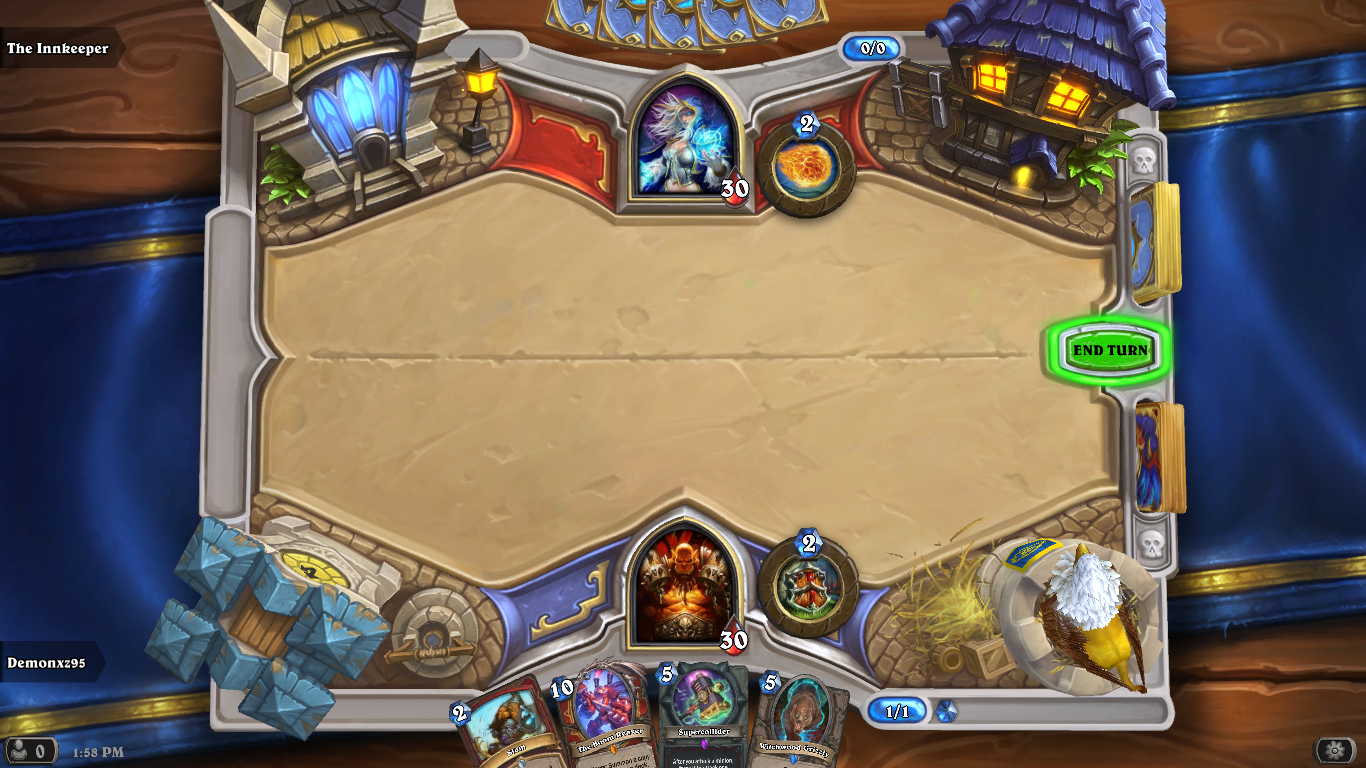
- Moving your cursor around the gryphon will cause its head to follow it. You can also click on it, which will make it roar.
- The barrel and boxes next to the gryphon's stand can be smashed, and the hay can be messed with.
- The flag on the gryphon's tower can be clicked on, causing it to move around a little bit.
- The sign found on the building in the top-right quadrant can be swayed around by clicking it. Excessive repetitive clicking will also cause it to break.
- The door to that building can also be opened and closed.
- Clicking on one of the building’s roof tiles will cause it to fall and break.
- The blue windows of the cathedral building can be clicked on, producing a sound. Clicking them excessively will cause them to shatter.
- Clicking the roof of the cathedral will ring the bell.
- The lightpost next to the cathedral can be turned on and off. Turning it off will cause the surrounding moths to leave.
- The clock on the barracks displays your computer's current time, and will even keep moving as the game goes on.
- The wooden roof of the barracks can be broken by clicking it enough.
- Some parts of the barracks can also be clicked on, creating a strange noise.
- The bucket in the well can be clicked on, making it move around. Clicking on it enough times will cause it to break and fall down to the bottom of the well.
- Clicking one of the stones around the well enough times will also cause the stone to fall into the well.
Journey to Un'Goro
Pretty interesting, right?
Most interactions are actually very simple, however, they sometimes get a little bit more complex. The most famous game board interaction in all of Hearthstone is probably the volcano on the Un’Goro game board.
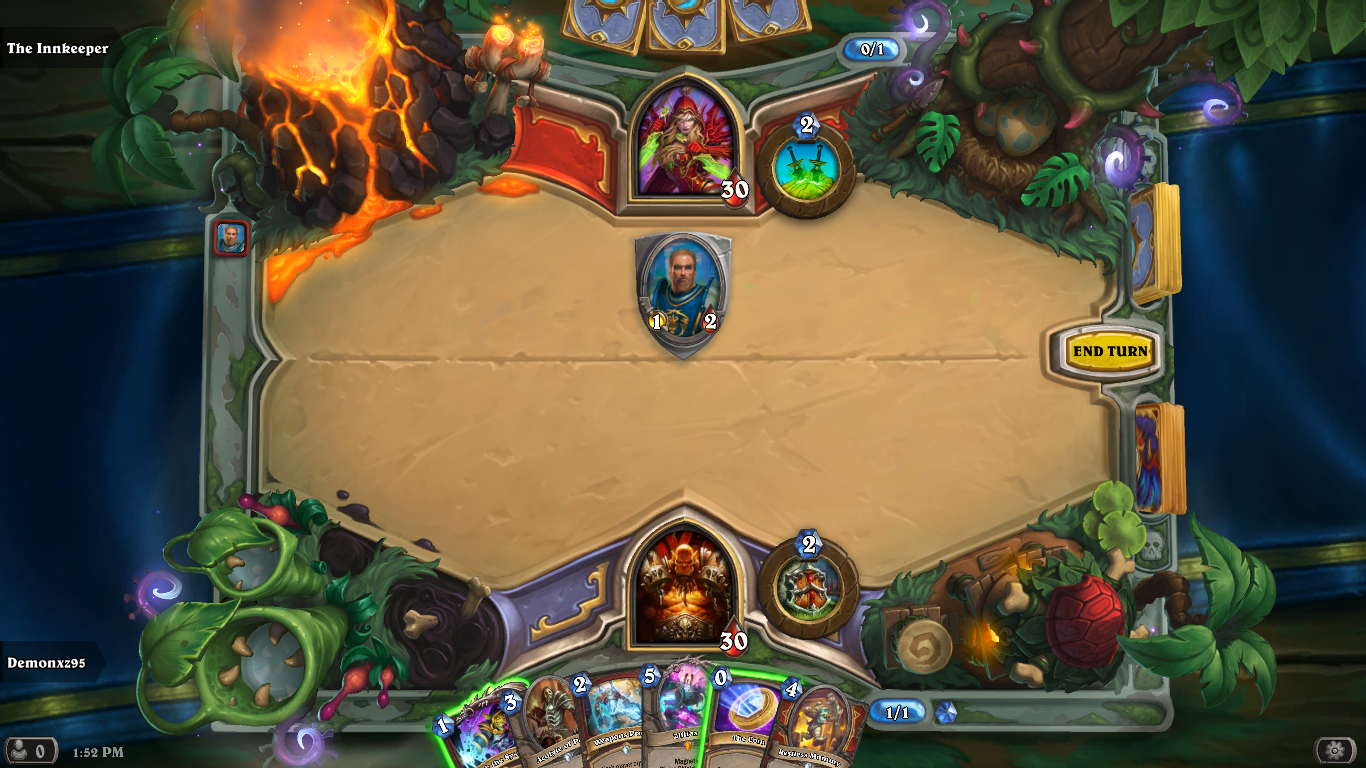
If you didn’t know, you can actually make the volcano erupt. Click on the drums and leaves in the bottom-right quadrant in this order: D, G, E, G, A.
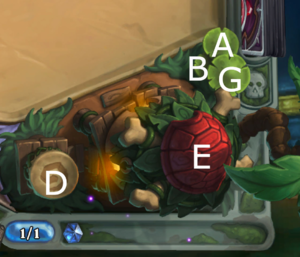
And voila, you’ve made the volcano erupt. The first known instance of this happening was by a YouTuber named Down Voted, who did it entirely by accident. The incident was published on YouTube on April 12th, 2017 - a mere 6 days after the expansion launched.
Rastakhan's Rumble
A similar thing also occurs on the Rastakhan’s Rumble game board.
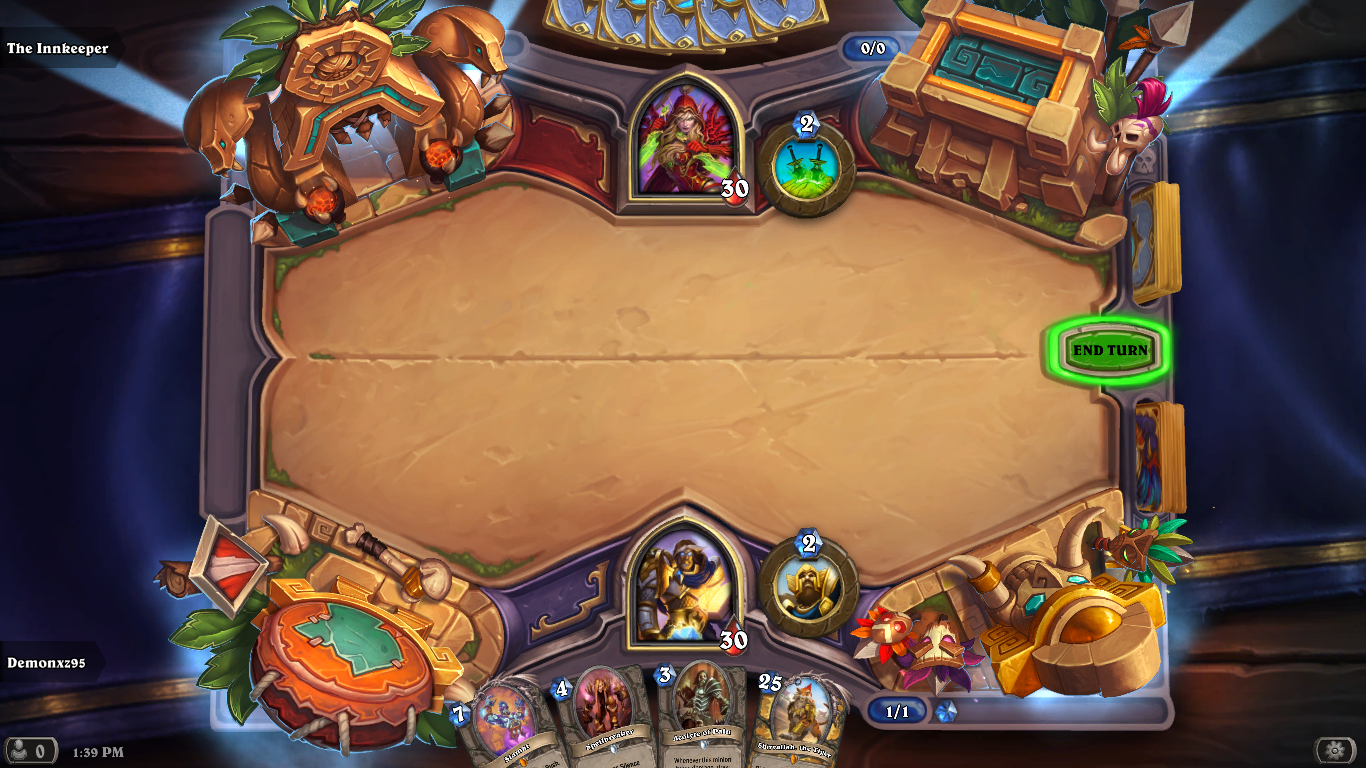
In the bottom-left corner, you will see a drum, a bone mallet, and a tusk. Click the following elements in this order: A, B, A, A, C. When you do that, you'll get some fanfare in the top-left.
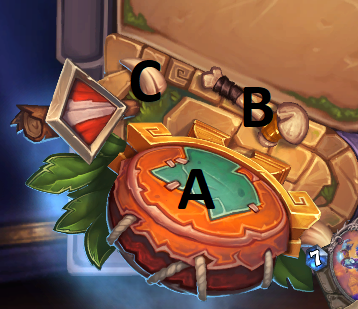
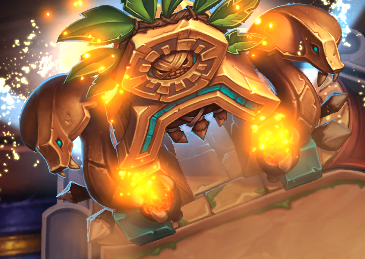
Saviors of Uldum
And yet again on one of the Saviors of Uldum game boards, which we documented a while ago.
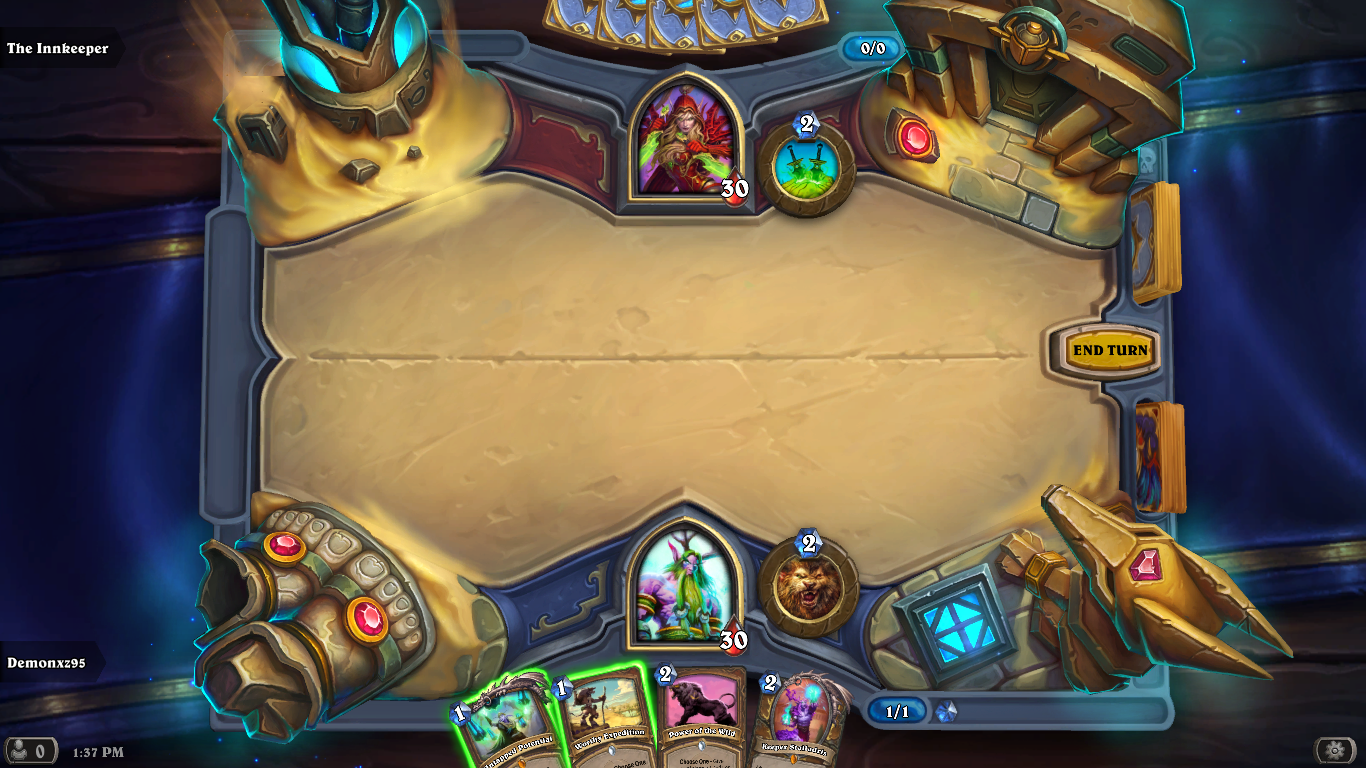
You see those toes in the bottom-left corner? They play notes! Click on each of the rubies twice to switch them to "accordion mode", then play them in the order on the picture below and the League of Explorer's theme will play.
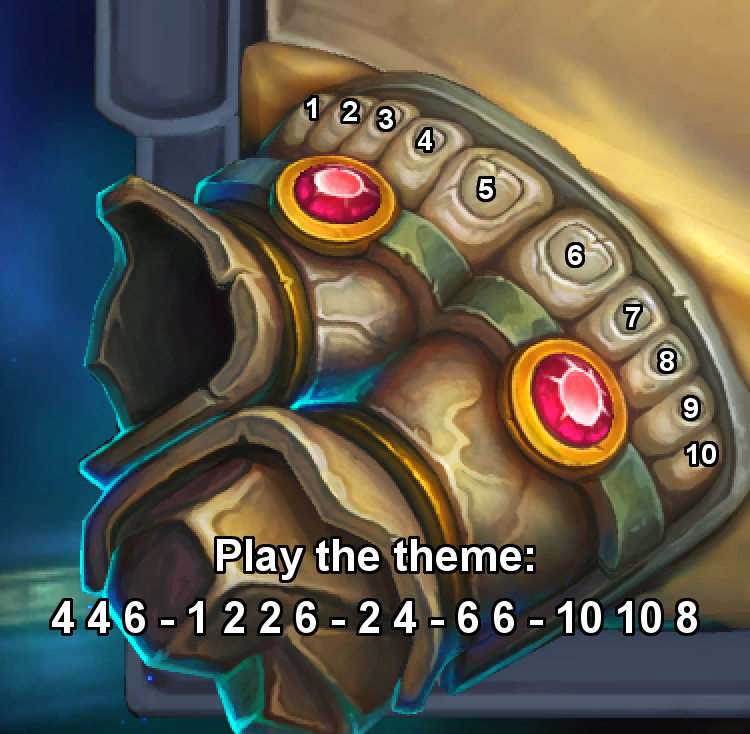
These are no doubt very fascinating features, but sometimes you’ve got to wonder why such interactions exist on the game board in a first place. MTG: Arena has different game boards of its own, but the only thing you can really interact with is your Battle Pet. Where do all of these fancy trinkets come from?
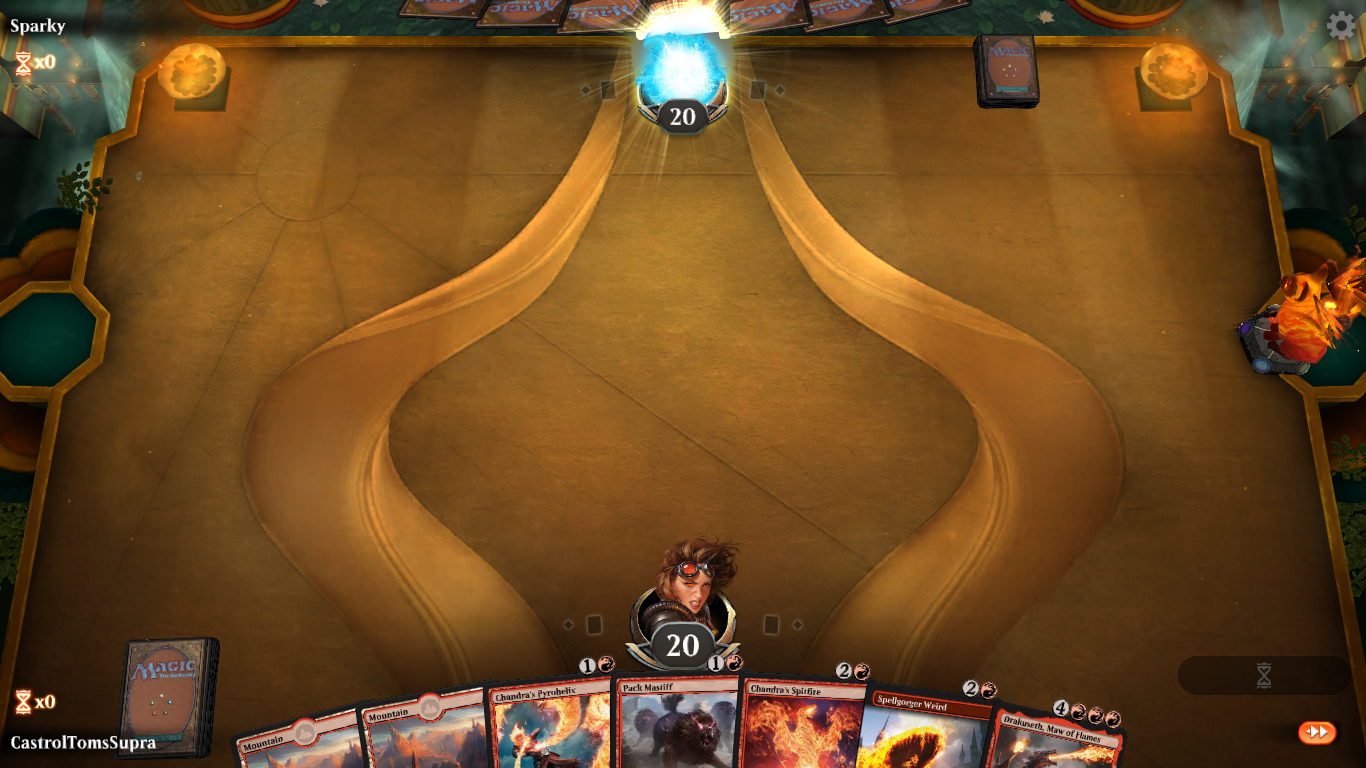
Pandaria
From the first few boards, it seems like they were mostly intended to just provide fun, brief moments of amusement. At first, the only incentive you’re given to click on anything is the gong from the Pandaria battlefield. Chances are, the gong might’ve been chosen so more players would know that you could interact with something on the board in any capacity, as otherwise, some players may have ended up playing for months (or possibly years) with no indication of the game board interactions.
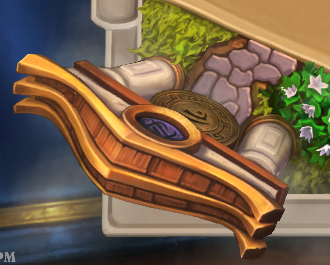
Fittingly, this same game board also includes the first random element out of all the game boards: the farm in the bottom-right. Clicking the crops will remove them, and clicking the water funnel will replace them. A variety of three different vegetables are possible, but occasionally, you may also get a boot. Even rarer than that though is a golden vegetable. According to an old tweet by Kyle Harrison, the chance of a golden vegetable spawning is either 1/1000 or 1/10,000. If we assume 1/10,000, this is rarer than encountering a Shiny Pokemon. The boot adds a little bit of humor to the easter egg, and the golden vegetable adds an element of "let's see if I can get this" feeling.
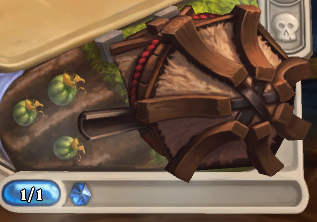
Orgrimmar
Now that Pandaria taught you about what you can do on the game board, it’s now piqued your curiosity as to what you could do on the other game boards. In addition to providing a little "easter egg hunt", it also acts as a distraction in the event that the game is going slowly. By the time you've interacted with the board elements a little bit, you realize how much life they add to the board, and how much fun you’ve had messing with very simple things. You've found out that you can fire the catapult on the Orgrimmar board.
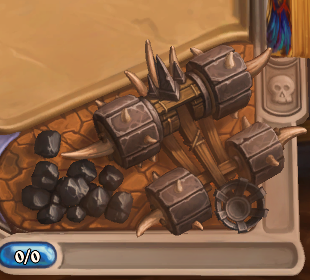
To fire the catapult on the Orgrimmar board, click and drag one of the nearby rocks onto the catapult, then click the catapult and it will fire the rock. The rock will hit a wolf, a Murloc, a goblin, or a wall off-screen. After you fire the catapult, you'll need to click it a few more times to move the arm back into the loading position.
Goblins vs Gnomes
At the time of the game’s launch, only Pandaria and Orgrimmar had some random elements to it, and Pandaria was the only one where the random element was actually visible on the board. Since Goblins vs Gnomes though, there have been a main-stay element in most boards. But as you get aware of the random nature of some of the boards, you start to wonder what else works that way, and what you can discover.
The Goblins vs Gnomes board is one of the most iconic boards in the game, from the laser that can launch the rocket or fire at the enemy hero’s portrait, to the goblin teleporter that can spawn a variety of different objects. The boards only get more interesting from here. Also a lot more random. From this point, nearly every board has at least one random element.
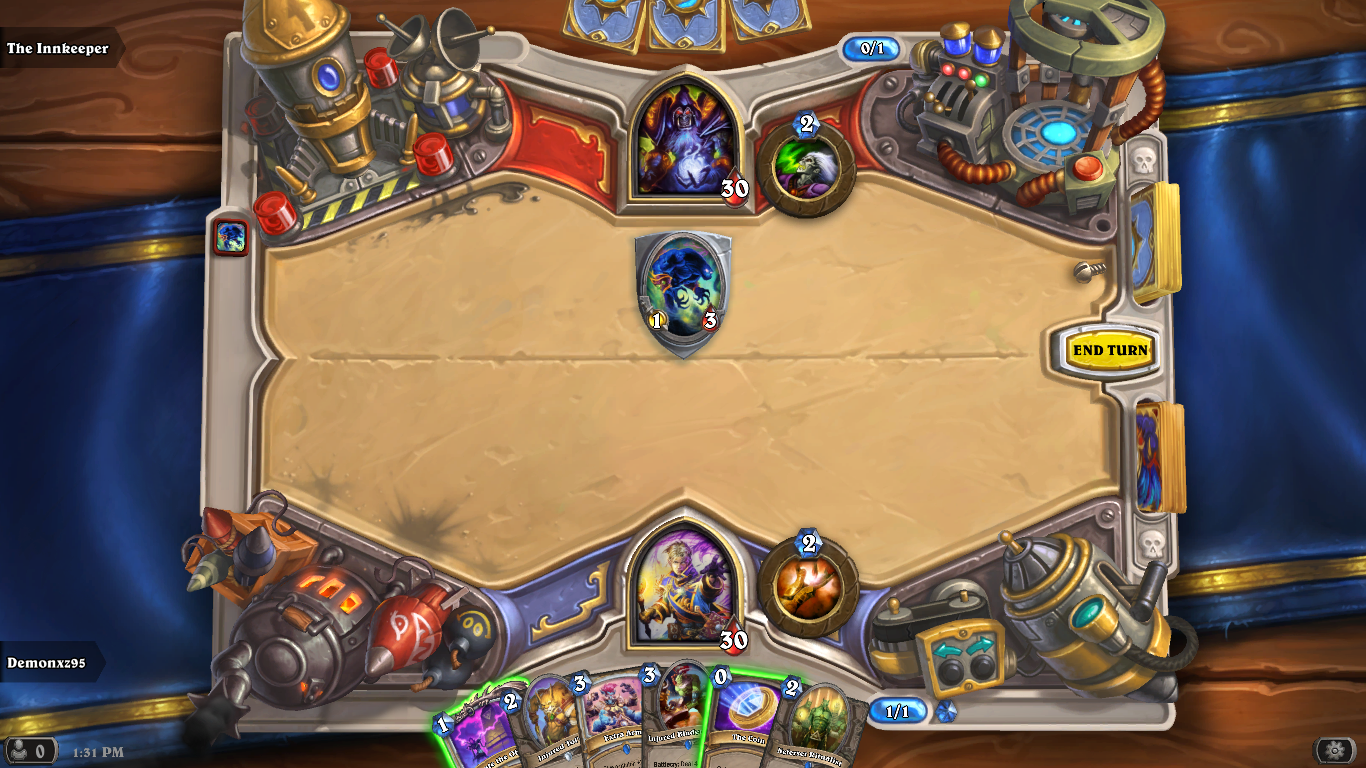
Mean Streets of Gadgetzan
A few interesting easter eggs of note exists on the Mean Streets of Gadgetzan game board.
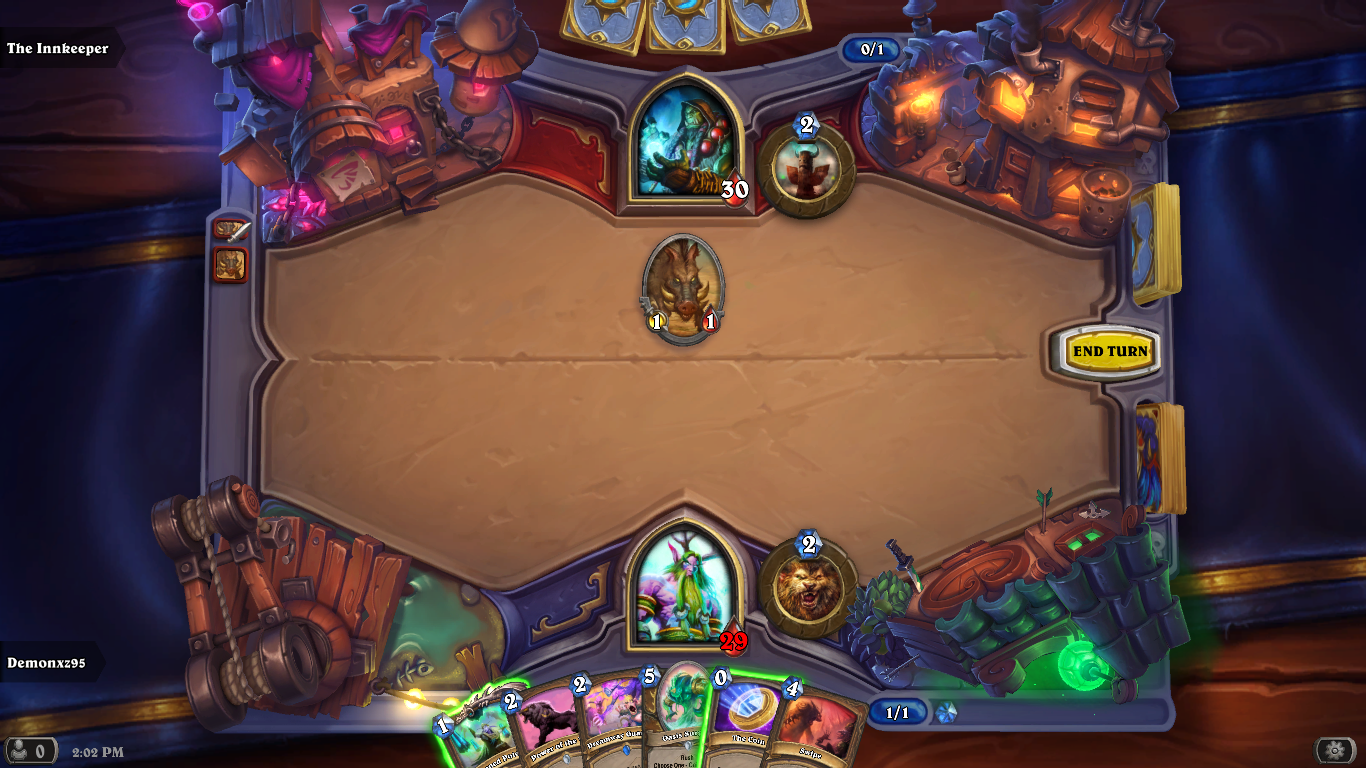
If you look at the bottom-right quadrant, you will see a sword, a shuriken, and an arrow lodged into the building. Clicking on the sword enough times will cause a magic, green dragon to sprout from it. This is a reference to Genji from Overwatch, another Blizzard game. In Overwatch, Genji wields a weapon called a "Dragonblade", which summons a similar looking green dragon when equipped. The shuriken is also a reference to Genji, as well as the card, Jade Shuriken, found in the same set (which itself may possibly allude to Genji in the first place). The arrow in the building similarly alludes to Hanzo, another Overwatch character.
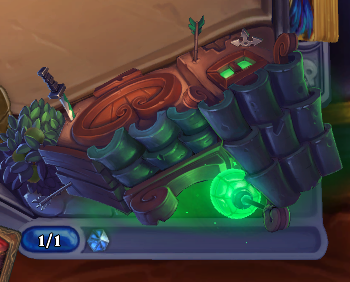
That’s not the only reference to Overwatch found on this board though. Occasionally, the crane in the bottom-left corner of the board can reel in a Pachimari doll, which is a doll specifically original to Overwatch.
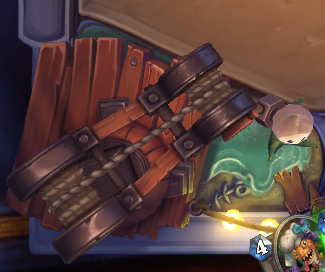
Around the time Mean Streets of Gadgetzan was released (December 1st, 2016), Overwatch was only out for 5 months and was already boasting some huge popularity. As it was "the new thing" from Blizzard at the time, it made sense to include some little nuances to it somewhere in the other games. It’s a cool little easter egg for people who happen to be fans of both Overwatch and Hearthstone to notice. This is currently the only board that contains an easter egg to another video game, but I think this is something that could be further utilized.
A possible reference to Fruit Ninja also exists in the bush next to the Jade Lotus house (the same house with the sword, shuriken, and arrow). Clicking the bush a few times will cause a fruit to fly up, and you can slice it in half while it’s in mid-air.
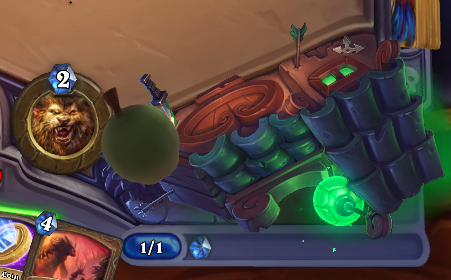
Then, right after Mean Streets of Gadgetzan is the Journey to Un’Goro board, which contains the volcano I mentioned previously in the article. The volcano, as well as the fanfare found on the Rastakhan’s Rumble game board, and the hidden combination on one of the Saviors of Uldum boards, are unlike any other interactions on any of the other boards given that they require a specific, and completely hidden, order of events to occur. Perhaps it was intended to be an inside joke on Team 5’s part until someone happened to discover it, and then they would reveal how to do it.
As to why MTG: Arena doesn't have its own little things to interact with on their game boards is most likely because Magic is a much slower and more methodical game than Hearthstone, and it's faithfully translated in Arena. You can look through your Graveyard. You can directly interact with your opponent during their turn. You can target multiple things with one card. The list goes on. As such, you probably wouldn't have enough time to look through the board and try to find what you can mess with. Hearthstone's simplicity allows you to have more "free time" to mess around with the boards.
To summarize everything, I believe that the main reason why the game boards can be interacted with so much is to provide some additional life to the experience and to provide a little bit of amusement to the player. It’s interesting to discover that you can interact with the game boards, and then finding out all that can be done, although I must wonder how many times has someone accidentally roped their turn messing around with the boards. Maybe someone at Team 5 was bored one day and decided to add these interactions to brighten their day up, and everyone on the team ended up liking it so much?
That's it for this installment of Hearthstone Hypothesis. Why do you think we can interact with the game boards so much? Did you learn any interactions you didn't know before? Let us know in the comments below. I'll see you all next time!
Some images in this post were sourced from Gamepedia.
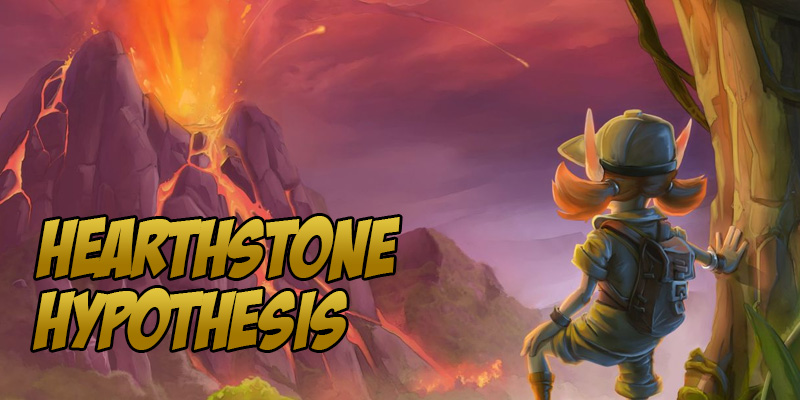
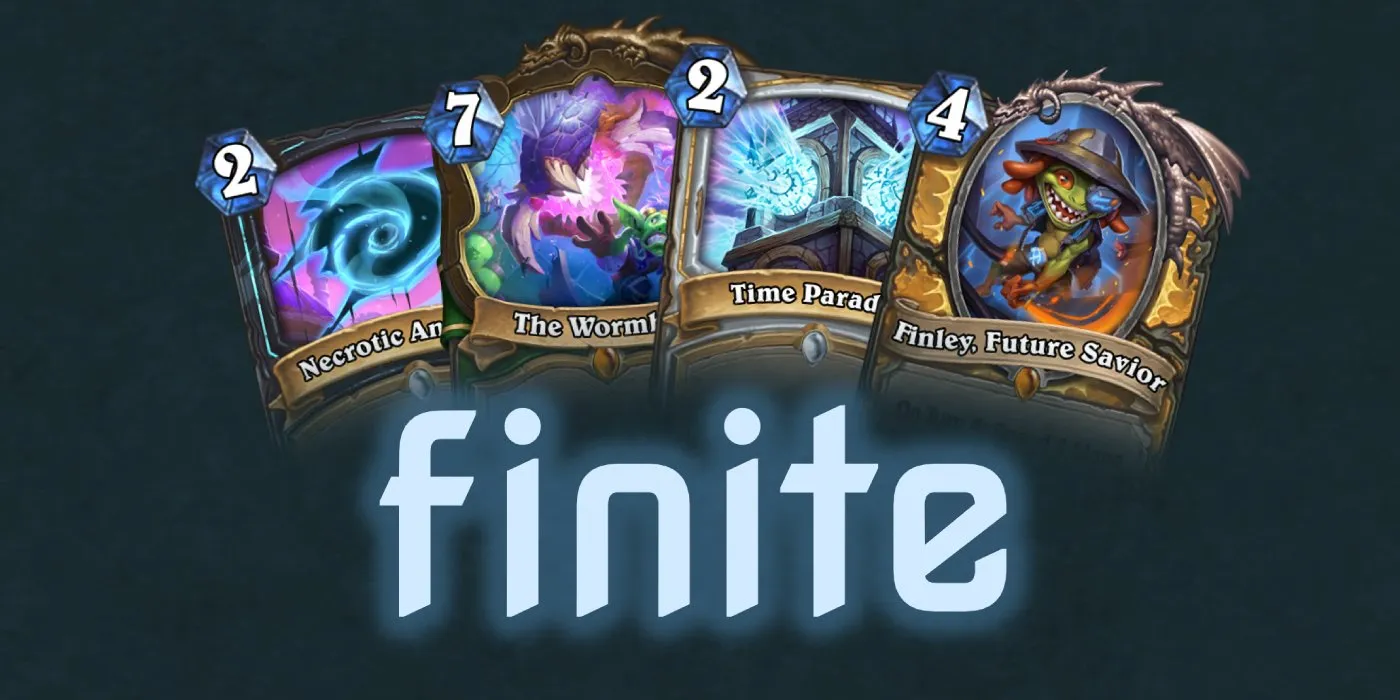
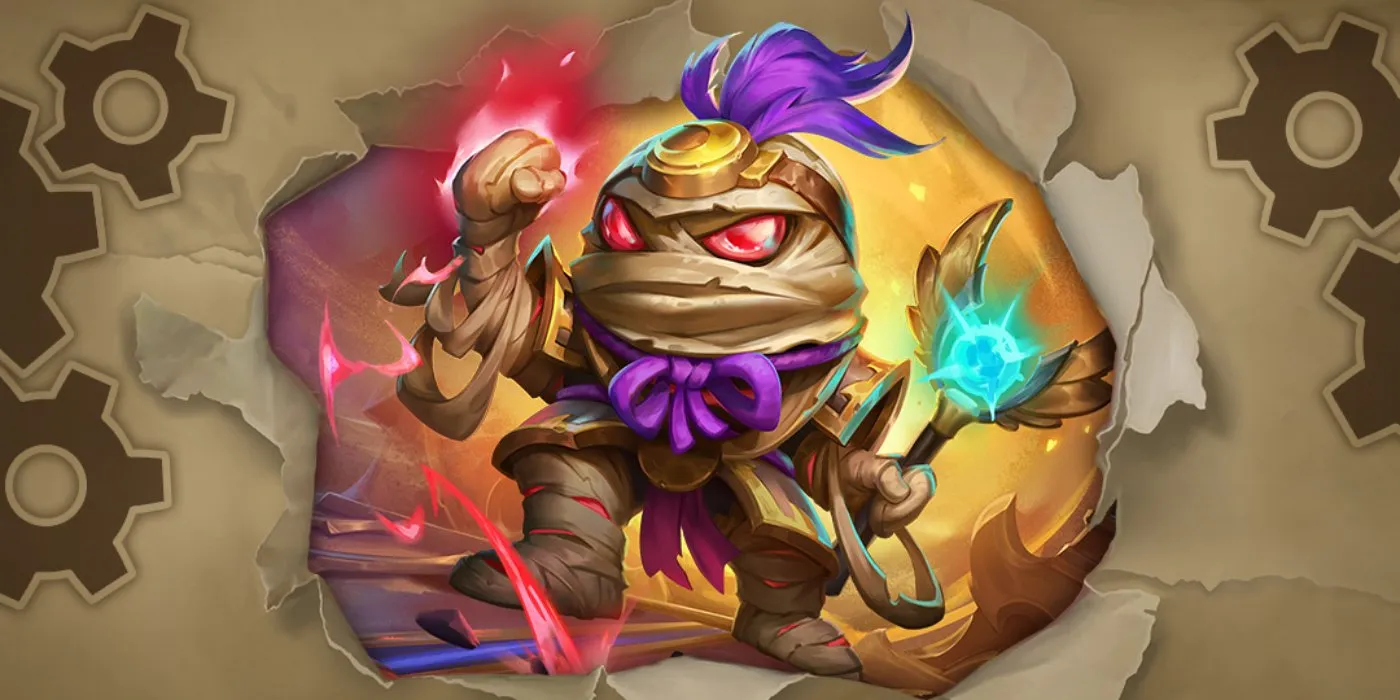
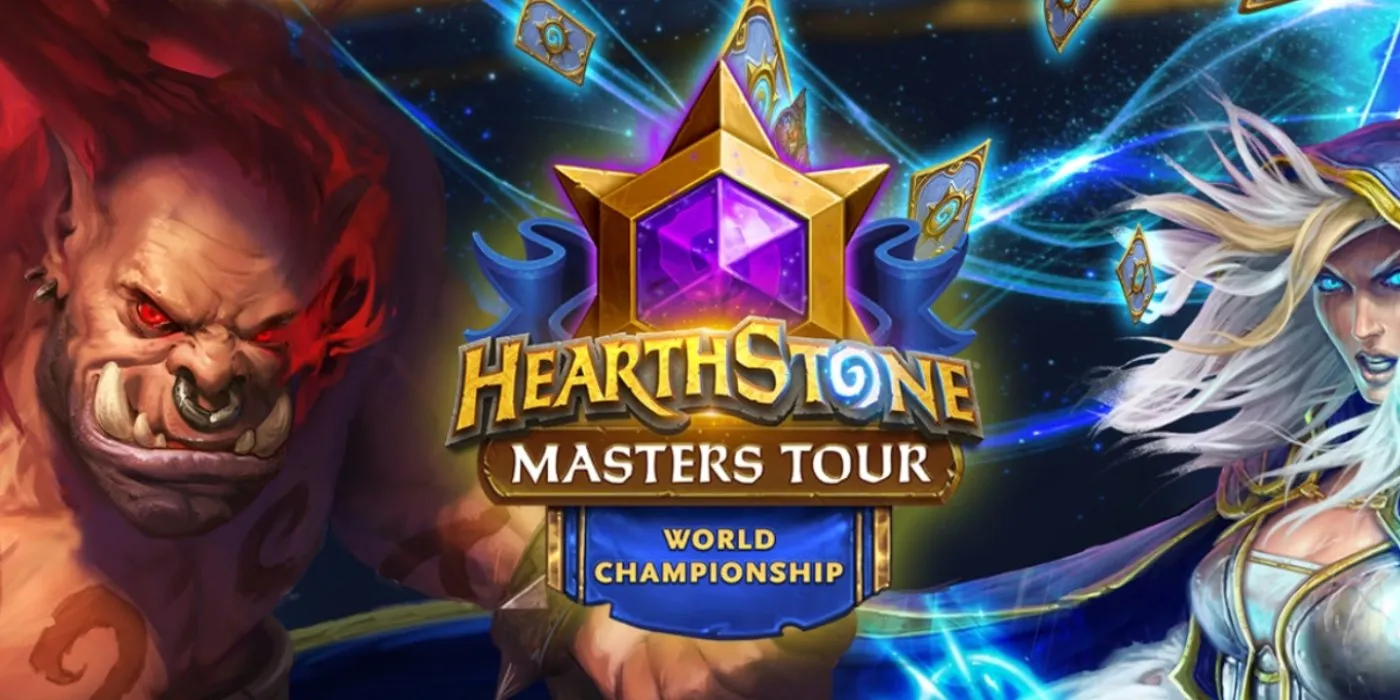
Comments
I know that I have problems with eyes, but where exactly is hypothesis?
Am I crazy or is the image for Pandaria an image of the MTG arena game board
That's on a separate section but yes, there's an image of MTG:A as well. There's no full image of the Pandaria board.
Every expansion has a secret on it game board <3
Not sure it's really an easter egg, but in the BRM board, after sinking rag's hammer, you can have a little bathtub duckling emerge :D
I don't understand why you are so desperate to mention M:tG multiple times. Besides that, you mention tonnes of interactions and offer no insight on the "Why".
Anyway, Blizzard games have always been loaded with Easter Eggs and nonsensical features.
* StarCraft 2 has an Ewok camp (Star Wars) and an Indomilisk Rex (Jurassic Park);
* SC2 has a reference to their old game Rock and Roll Racing in LotV;
* SC2 also has a mini-game called Lost Viking, which is reference to their old game Lost Vikings;
* The Lost Viking Olaf can also be found in World of Warcraft;
* There's a Hydralisk (StarCraft) in the forest in Warcraft III;
* There's Dance-Dance-Revolution in Overwatch.
And many more. It's a bit of light-hearted comedy that has come to be expected in any Blizzard title.
You seem to have not read the article in full.
Plus whats wrong with mentions of MtG? Its the father of all card games and has a now successful digital version. Seems normal plus this site aint just for HS alone tho its the main focus
You must not have read it very carefully, if you missed several paragraphs talking about the "Why" :)
The answer is pretty straight forward actually. The interactions are a relic of an early design concept they had, where the board would actually impact gameplay by attacking minions and such. They scrapped the concept pretty quickly, but the idea of adding life and interactivity to the board stuck around, giving players stuff to do and discover as they wait around for their opponent to play.
They cover this stuff in the Art of Hearthstone book.
They also talked about this in some videos when Hearthstone first launched, remarking on how players of games often fiddle with something in the real world between turns. So they built this into the virtual card game, especially for when it's your opponents turn.
I find myself clicking more repetitively when I'm more nervous - at least it's not super visible to my opponent otherwise it would be a terrible 'tell'!
One time while playing on the TGC board I was clicking the archery target and I hit a bullseye then split that arrow in half with my next click/shot Robin Hood style. I have never replicated this again despite many attempts. Hasn’t anyone else seen this or was it all a dream?
In the Goblin Vs. Gnomes game board you forgot to mention how you can open the furnace door and if you do it enough times a spark will ignite the fireworks. Sometimes you can only get one side or the other to go off but sometimes you get both sides to go.
There are some other fun game boards out there but GvG is my favorite still.
I didn't "forget" to mention that. The article isn't supposed to show everything you can do on the boards that I showcase, but instead talks about the idea as a whole.
Wow that is an extremely defensive response. I suggest not writing articles if you cannot handle polite commentary. Considering that you mentioned in detail all the other interactions on all the other boards you went over I felt that it was an omission that should have been mentioned. Not only that but I know that it isn't supposed to show everything hence I didn't mention all the missing boards.
Not only that but in general if the total point of the article was to talk about the idea as a whole then I think you missed the mark there. It felt like you were just going into the details on the boards you decided to cover but there wasn't much (there was some) or not enough talk of what it means as a whole.
I dont think it's that easy to detect if someone is being defensive or not by a simple text reply. U are just jumping to conclusions here. Although his initial line seemed a bit blunt
Sorry. I didn't mean to sound defensive there, and I apologize if I did.
I too apologize if my initial post sounded like a criticism. I just wanted to mention one of my favorite board interactions that happened to not be mentioned. I really do enjoy articles like this and hope that they continue.
Great article! Thanks for the info.
Stormwind has an interaction you missed, once the bucket has fallen into the well, you can continue clicking on a specific stone until the stone breaks off and falls into the well
"Clicking one of the stones around the well enough times will also cause the stone to fall into the well."
It was always there, but after I read your post I noticed that I mistyped it, and I changed it.